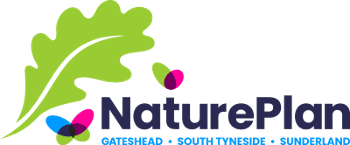South of Tyne and Wear Local Nature Recovery Strategy questionnaire
We asked you about how you view nature in your local area, and to tell us about areas that you think are important for nature, or that could be improved for nature.
The questionnaire was open to responses from 20 May to 9 July 2024.
Key messages from the response are that:
- 92% of respondents strongly agreed that 'nature should be protected in the South of Tyne and Wear Local Nature Recovery Strategy area', with the remaining 8% agreeing with the statement
- 66% of respondents either strongly agreed or agreed with the statement 'the area in which they live is rich in nature'. 31% either strongly disagreed or disagreed
- Over 50% of respondents access areas they consider as being important for nature or could be improved for nature within 500m of where they live
- Of those sites identified as being important for nature or could be improved for nature, 40% of those who responded access such areas daily
- 13,771 hectares of land were identified, of which 93% was seen as important for nature, and 21% could be improved for nature.
- There was an 18% overlap in area of sites identified with an existing nature conservation designation (respondents were shown a blank map to prevent discouraging identification of existing designations)
- Grassland, hedgerow, and woodland were the top three habitat types identified as important for nature
- 93% of sites were considered important for nature owing to the presence of bird species
- Grassland, woodland, urban, and hedgerow were the top habitat types you said could be improved for nature (with urban and hedgerow joint third)
- The majority of respondents cited birds, plants and invertebrates as the species groups most capable of being recovered on sites identified as 'could be improved for nature'.
- Providing access to nature was the most cited co-benefit
Thank you for your responses to the questionnaire. Your responses will be used to inform the development of the NaturePlan.
Summary of results
How much do you agree with the statement that 'nature should be protected in the South of Tyne and Wear Local Nature Recovery Strategy Area?'
Of respondents who answered the question, 92% strongly agreed and the remaining 8% agreed.
How much do you agree with the statement that 'the local area where I live is rich in nature?'
Of respondents who answered the question:
- 39% strongly agreed
- 27% agreed
- 27% disagreed
- 3% strongly disagreed
- 4% didn't know
The area identified is important for nature because it supports one or more of the following habitats:
Coastal | 12% |
Grassland | 69% |
Heathland | 31% |
Hedgerow | 67% |
Intertidal | 14% |
Scrub | 38% |
Urban | 29% |
Wetland | 52% |
Woodland | 62% |
Other | 2% (habitat type not specified) |
% of identified sites
The area identified is important for nature because it supports one or more of the following species groups:
Amphibians | 57% |
Birds | 93% |
Fish | 38% |
Invertebrates | 45% |
Mammals | 69% |
Plants | 90% |
Reptiles | 26% |
% of identified sites
The area identified could be improved for nature by creating or restoring/enhancing one or more of the following habitats:
Coastal | 0% |
Grassland | 82% |
Heathland | 29% |
Hedgerow | 54% |
Intertidal | 7% |
Scrub | 25% |
Urban | 54% |
Wetland | 43% |
Woodland | 64% |
Other | 11% (Food forest/orchard: 7%, unused allotments: 4 %) |
% of identified sites
The area identified could be improved for nature by recovering one or more of the following species groups:
Amphibians | 32% |
Birds | 86% |
Fish | 28% |
Invertebrates | 75% |
Mammals | 61% |
Plants | 79% |
Reptiles | 21% |
% of identified sites
Do you think the area identified could contribute towards:
Carbon capture | 67% |
Tackling the effects of climate change | 65% |
Reducing flood risk | 56% |
Providing access to nature | 85% |
% of those who answered the question
How far is the area from your home?
Less than 500m | 55% |
Less than 2km | 41% |
Less than 5km | 4% |
% of those who answered the question
How often do you access the area?
Daily | 40% |
Weekly | 36% |
Monthly | 15% |
Yearly | 14% |
% of those who answered the question




